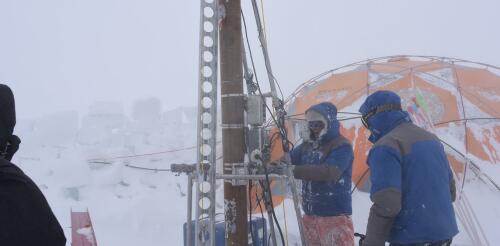Microbiology
As humans alter the planet’s climate and ecosystems, scientists are looking to Earth’s history to help predict what may unfold from climate change. To this end, massive ice structures like glaciers serve as nature’s freezers, archiving detailed records of past climates and ecosystems – including viruses. We are a team of microbiologists and paleoclimatologists that studies ancient microorganisms, including viruses preserved within glacier ice. Along with our colleagues Lonnie Thompson, Virginia Rich and other researchers at the Ice Core Paleoclimatology group at The Ohio State University, we investigate interactions between viruses and their environment archived in ice cores from the Guliya Glacier on the Tibetan Plateau. By linking the genomes of ancient viral communities to specific climate conditions preserved in glacier ice, our newly published research offers insights into how these viruses have adapted to Earth’s shifting climate over the pas...
Flesh-eating bacteria sounds like the premise of a bad horror movie, but it’s a growing – and potentially fatal – threat to people. In September 2023, the Centers for Disease Control and Prevention issued a health advisory alerting doctors and public health officials of an increase in flesh-eating bacteria cases that can cause serious wound infections. I’m a professor at the Indiana University School of Medicine, where my laboratory studies microbiology and infectious disease. Here’s why the CDC is so concerned about this deadly infection – and ways to avoid contracting it. What does ‘flesh-eating’ mean? There are several types of bacteria that can infect open wounds and cause a rare condition called necrotizing fasciitis. These bacteria do not merely damage the surface of the skin – they release toxins that destroy the underlying tissue, including muscles, nerves and blood vessels. Once the bacteria reach the bloodstream,...

